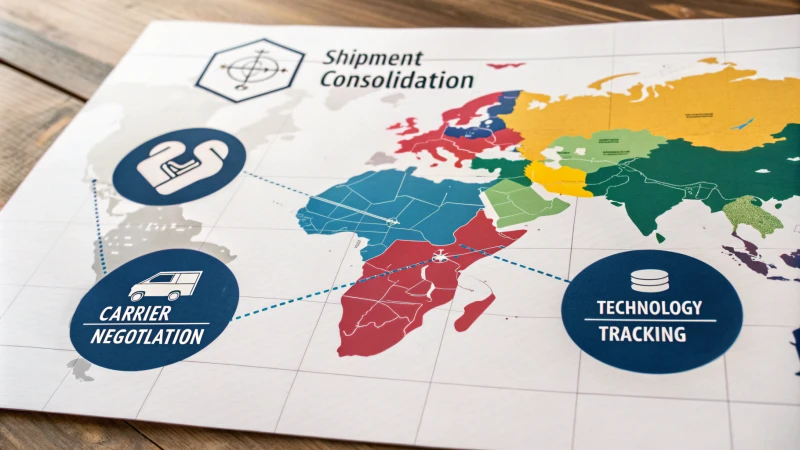Ever tried sending a package overseas and felt overwhelmed by all the shipping details? I know the feeling.
Sending a package to Hungary can cost anywhere from $25 to $50 per kilogram for standard services like FedEx or UPS. Costs depend on factors such as package weight, shipping method, and customs duties.
I've been there, trying to figure out the best way to send a package without breaking the bank. It's not just about slapping a label on a box and hoping for the best. The actual cost can vary depending on a host of factors like the size and weight of your package, how quickly you need it to arrive, and those pesky customs duties that can sneak up on you. But don't worry, I've got some insights to help you navigate this process more smoothly and economically.
Standard shipping to Hungary costs $25-$50 per kilogram.True
FedEx and UPS typically charge between $25 and $50 per kilogram.
Customs duties do not affect shipping costs to Hungary.False
Customs duties are a factor that influences the final shipping price.
What Factors Influence Shipping Costs to Hungary?
Ever tried to figure out why shipping costs to Hungary seem to fluctuate so wildly? Let me take you on a journey through the labyrinth of logistics.
Shipping costs to Hungary hinge on several factors: package size and weight, shipping method, origin, and the value of goods. Plus, customs duties, taxes, and handling fees all add to the final bill.
When I first started shipping goods internationally, I was baffled by how something as simple as the size and weight of a package could make such a big difference in cost. Imagine sending a surprise gift to a friend in Hungary only to realize the box is larger than expected. Suddenly, the shipping charges skyrocket! It's like those times when you think you're getting a deal at the supermarket until they weigh your vegetables.
Package Size and Weight
The size and weight of your package are primary determinants of shipping costs. Typically, the heavier or larger the package, the higher the cost. Carriers often use dimensional weight calculations to determine charges, which consider both the actual weight and volume of a shipment.
| Factor | Impact on Cost |
|---|---|
| Size | Larger packages increase cost |
| Weight | Heavier shipments incur more expense |
I learned quickly that carriers use something called dimensional weight to calculate charges. It took me back to high school math—trying to remember formulas and conversions. The gist is, bigger and heavier packages cost more, which makes perfect sense once you think about it. I always remind myself of this before packing.
Shipping Method
Choosing between air, sea, or land felt like picking travel insurance. Each has its pros and cons.
- Air Freight: Generally faster but more expensive than sea freight.
- Sea Freight: More economical if time allows for longer transit.
Consider what balance of speed and cost works best for your needs. Learn more about freight methods1 before deciding.
Once, I needed something in a hurry, so air freight it was—costly but fast. Other times, I could afford to wait and save some euros with sea freight. Striking a balance is key, just like deciding whether to splurge on express train tickets or enjoy the scenic route.
Shipping Origin
Where your shipment originates can impact the cost significantly. Shipping from distant locations may require more logistical steps and additional fees.
Shipping from Asia to Europe can be a logistical maze, with costs adding up like small change in your pocket. Understanding regional shipping networks can help in planning cost-effective routes2.
I started planning my routes more carefully after realizing how much I could save by optimizing my shipping origin.
Value of Goods
The declared value of your goods affects insurance costs and duties. Higher value shipments might need additional insurance, influencing overall costs.
Declaring the value of goods was another puzzle. High-value items need more insurance, which ups the cost. It's like buying car insurance for a new sports car versus an old sedan—one costs way more.
Check regulations on how declared value impacts costs3 to avoid surprises.
Additional Costs: Customs and Taxes
Then come the less visible costs: customs duties, taxes, and handling fees can influence shipping costs significantly. These can sneak up on you like unexpected guests at a party.
Ensure you're aware of Hungary's import regulations and potential costs associated with customs clearance became crucial for me to avoid last-minute surprises.
Choosing the Right Carrier
Finding the right carrier was like finding a good restaurant—everyone has different tastes and budgets.Different carriers offer varying rates and services.Selecting a carrier that aligns with your needs can affect both the cost and efficiency of your shipping process.Comparing options became a habit of mine,
sure my shipments were both cost-effectiveand timely.Compare carrier options4to findthe best fitfor your business needs.Everyshipping journey taughtme something new.Understanding these factors not only helpsin budgetingbut also ensures smoother operations formy businessand fewer headaches forme.
Larger packages cost more to ship to Hungary.True
Shipping costs increase with package size due to dimensional weight.
Air freight is cheaper than sea freight to Hungary.False
Air freight is generally faster but more expensive than sea freight.
How Do Different Carriers Compare in Price?
Choosing the right mobile carrier can feel like searching for the perfect pair of shoes—it has to fit just right.
To compare mobile carriers on price, consider base costs, data packages, and additional fees. Verizon typically costs more due to extensive coverage, while T-Mobile offers competitive pricing with robust data options.

I remember the time I stood in a bustling phone store, surrounded by shiny devices and eager salespeople. It was decision day, and picking a carrier felt like embarking on a quest. Each option seemed to promise the world, but I knew that understanding the true cost involved more than just the monthly sticker price.
Base Costs and Pricing Plans
When it comes to choosing a plan, it's like piecing together a puzzle. Verizon is often seen as the premium choice—its coverage is excellent, but your wallet might feel a bit lighter. Meanwhile, T-Mobile seems to whisper sweet savings in your ear, especially if you’re wrangling a whole family’s worth of plans. Here's a quick snapshot to help make sense of it all:
| Carrier | Base Plan Cost | Features Included |
|---|---|---|
| Verizon | $70/month | Unlimited talk, text, and data |
| T-Mobile | $60/month | Unlimited talk and text, 50GB data |
Data Packages
Data, the lifeblood of our online existence. I've found myself calculating data usage like budgeting calories before a holiday feast. AT&T offers flexibility here, letting you tailor your plan to your habits, while T-Mobile5 throws in enticing extras like streaming perks. Here's what you can expect:
| Carrier | Data Package Cost | Included Data | Additional Features |
|---|---|---|---|
| AT&T | $50/month | 10GB | Rollover data |
| T-Mobile | $55/month | Unlimited | Netflix subscription |
Additional Fees and Hidden Costs
Ah, hidden fees—the sneaky culprits that can turn a sweet deal sour. Like finding an extra charge on your dinner bill for the "complimentary" bread basket, these fees can sneak up on you. US Mobile and Sprint are known for their tempting low prices upfront but watch out for those hidden extras like activation fees and taxes. It's always wise to dig into the details; check out this detailed breakdown6 so you’re not caught off guard.
Special Offers and Discounts
Every now and then, carriers toss out special deals that are hard to resist. Remember that time I snagged a new phone at a killer discount just by trading in my old one? Verizon often does trade-in deals, while T-Mobile might knock off some dollars if you set up automatic payments. Staying in the loop on these offers can make a big difference.
So there you have it. When sizing up carriers on price, it's like pulling back layers on an onion—there's more beneath the surface than just the base cost. Consider the full picture—fees, perks, and potential discounts—when deciding what best fits your needs. It's all about finding that perfect balance between cost and what makes your tech life tick.
Verizon offers the cheapest base plan.False
Verizon's base plan is $70/month, more expensive than T-Mobile's $60/month.
T-Mobile includes Netflix with its data package.True
T-Mobile's data package includes a Netflix subscription as an additional feature.
What Extra Fees Might Catch You Off Guard?
Ever felt like you're navigating a maze when shipping internationally? I've been there, and those hidden fees can catch you off guard!
When shipping goods internationally, be ready for extra costs like customs duties, taxes, handling fees, and shipping carrier surcharges. These can really add up, so it's crucial to budget for them in advance.
Understanding Common Additional Fees
I remember the first time I shipped a batch of goods internationally—I was blindsided by all the extra fees. Here's a breakdown of what you might face beyond the standard freight costs:
-
Customs Duties and Taxes: Each country has its own rules. The surprise here is how quickly these fees can add up. One time, I imported electronics from China and the customs duty was way more than I had estimated. Now, I always use online tools to get a ballpark figure.
-
Handling Fees: These sneaky charges pop up both from shipping carriers and customs brokers. I learned the hard way that they often depend on the size and weight of the shipment, not just its value.
-
Surcharges: Depending on your shipping method7, there can be surcharges for things like fuel or security. I once opted for express shipping thinking it was straightforward, only to find out there were additional fees for expedited handling.
Examining Specific Scenarios
Here's how different scenarios can affect your costs:
| Scenario | Potential Additional Fees |
|---|---|
| Importing from China | Customs duties, VAT, import handling fees |
| Express shipping | Fuel surcharge, expedited handling fees |
| Large shipments | Heavy-lift surcharges, warehousing fees |
Navigating Carrier-Specific Charges
Each shipping carrier8 has its own quirks. For example:
- FedEx: I found out they might charge for extras like Saturday delivery.
- UPS: Offers insured delivery options, which can increase costs if you're not careful.
Preparing for the Unexpected
To keep things smooth and avoid surprises:
- Conduct thorough research: Learn about the fee structures of various carriers to dodge hidden costs.
- Use online calculators: Many freight companies offer tools to help estimate potential fees.
- Consult a logistics expert: They have insights that can save you a lot of money. I've benefited immensely from a few consultations that gave me new strategies to minimize costs effectively.
By planning ahead and understanding these fees, I've found that my shipments are not only on time but also within budget. Hopefully, these tips will help you navigate your own international shipping transactions9 with fewer surprises!
Customs duties are always the same for all goods.False
Customs duties vary by the value and category of goods.
Handling fees are based on shipment size and weight.True
Handling fees depend on processing costs related to size and weight.
How Can You Save on International Shipping Costs?
Ever find yourself cringing at the cost of shipping internationally? Trust me, I've been there. But with a bit of savvy planning, you can cut down those expenses without losing out on quality.
To save on international shipping costs, I consolidate shipments, negotiate rates with carriers, and use technology for tracking. These strategies streamline logistics and trim expenses.

Optimize Your Shipping Strategy
One effective way to cut shipping costs is by optimizing your shipping strategy. I remember the first time I consolidated my shipments. It felt like a lightbulb moment—combining multiple packages into one not only slashed the per-unit costs but also reduced the administrative headache of managing separate shipments. Imagine moving from tracking ten individual boxes to just one! The savings were immediate and significant.
| Strategy | Description |
|---|---|
| Consolidate Shipments | Combine shipments to save on per-unit costs. |
| Negotiate Rates | Discuss lower rates based on volume or loyalty. |
| Utilize Technology | Use software to track and manage shipments. |
Negotiate with Carriers
Building a good rapport with your shipping carrier is like having a secret weapon in your arsenal. During one particular negotiation, I was able to secure a discount simply because of the volume I was shipping regularly. Don't hesitate to ask; sometimes, these conversations can lead to unexpected savings.
Use Technology for Efficiency
Utilizing technology has revolutionized my shipping process. The real-time tracking features and automated documentation tools available today mean fewer errors and smoother operations. There's something incredibly satisfying about seeing everything move seamlessly from screen to reality.
Consider using a freight forwarding service10 that offers comprehensive logistics solutions. They often have negotiated rates with carriers that could translate into cost savings for your business.
Exploring different shipping methods is another way I've managed to save. While air freight offers speed, sea freight often comes with a more attractive price tag. Depending on the urgency and nature of your shipment, choosing wisely can make all the difference.
Be Aware of Additional Costs
Overlooking customs duties, taxes, or handling fees can catch you off guard, as I learned the hard way once when a shipment landed in Hungary. Knowing these potential costs upfront helps in planning and prevents any surprise hits to your budget.
By understanding these factors and incorporating strategic practices, you can optimize your shipping process and minimize costs effectively. It's all about making informed choices and staying proactive.
Consolidating shipments reduces per-unit shipping costs.True
Combining multiple shipments into one can lower overall fees.
Air freight is cheaper than sea freight for international shipping.False
Air freight is typically faster but more expensive than sea freight.
Conclusion
Shipping a package to Hungary costs $25-$50 per kilogram, influenced by factors like weight, shipping method, customs duties, and handling fees. Planning can reduce overall expenses.
-
Explore different freight methods to understand their costs and benefits, helping you choose the most suitable option for your business. ↩
-
Learn about optimizing shipping routes to save on costs while ensuring timely delivery of goods. ↩
-
Discover how the declared value of shipments affects insurance and duties, essential for accurate cost estimation. ↩
-
Gain insights into various carriers' services and pricing to select the most suitable partner for your logistics needs. ↩
-
T-Mobile often bundles unique features like streaming services; discovering these adds value to their plans. ↩
-
Uncovering hidden fees can prevent unexpected charges and ensure you're choosing the most transparent carrier. ↩
-
Learning about surcharges helps in budgeting for unexpected costs like fuel and security fees in your shipments. ↩
-
Knowing carrier-specific charges can help choose the right service for your shipping needs and budget. ↩
-
Understanding customs duties is vital as they are a significant part of shipping costs and vary by country and product type. ↩
-
Freight forwarders often negotiate better rates with carriers due to bulk volumes, offering you potential cost savings on your shipments. ↩




